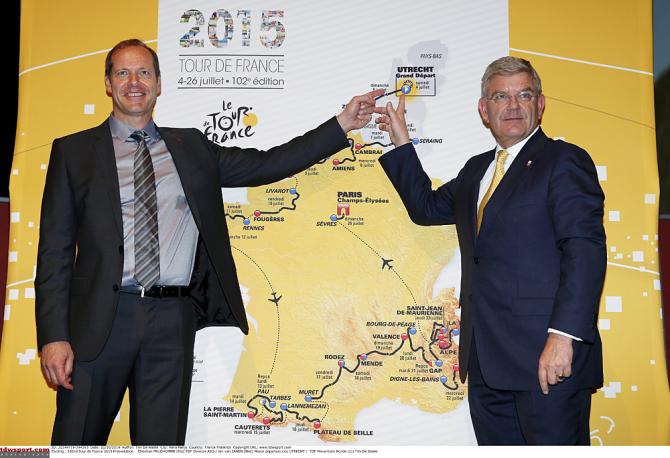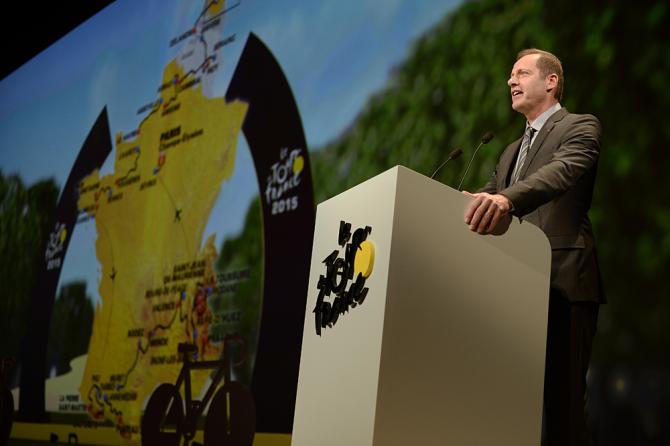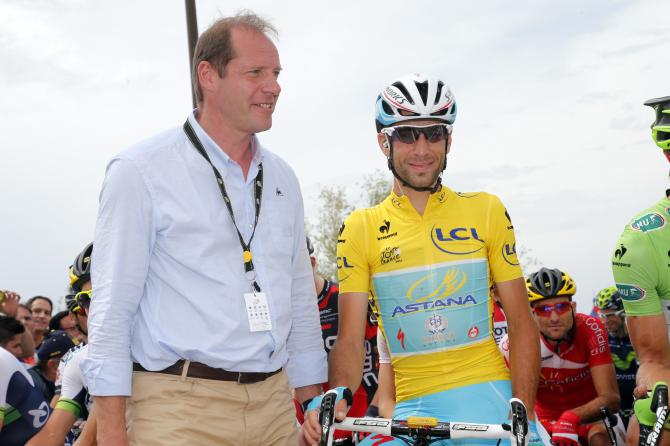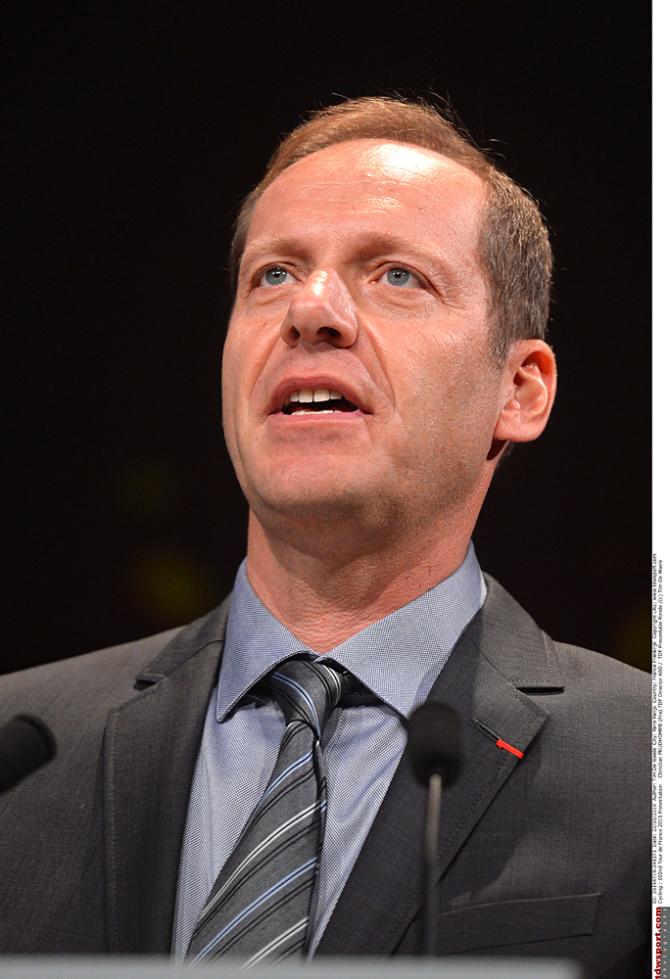Prudhomme shows swagger with atypical 2015 Tour de France route
Race director excited about his innovative race design




Christian Prudhomme, the director of the Tour de France suggested that cycling and the Tour de France has become 'swag' (a French term meaning cool) after the spectacular start in Yorkshire and the dramatic racing at the 2014 edition of the race.
Prudhomme showed plenty of swagger at the presentation, knowing that the Tour is still the biggest and most dominant race in professional cycling. By designing what he calls an 'atypique' route for 2015, he is hoping to again inspire a thrilling race with daily drama that will have fans around the world watching every moment of the race. He explained his philosophy for designing the race route. With the first nine stages in the Netherlands, Belgium and northern France, it was impossible to include any early mountain stages. Instead new technical director Thierry Gouvenou was sent out to find difficulties that will test riders' ability to race in the cross winds, on short climbs and on the pave.
“It's a very different first week compared to the last ten years,” Prudhomme told the media back stage after detailing the stages during the presentation.
“It's the first time a Tour stage finishes on a dyke in the Netherlands and if the wind blows on that day... Then there's the pave, the finish on the Mur de Huy, the Mur de Bretagne. We'll quickly see the best riders emerge, which is what we want. Nibali winning in Sheffield was a good example of this. The 2014 Tour may be over but the next Tour is making me very excited. I can't wait to be in Utrecht.”
He is happy to see the riders suffer on the cobbles, with the seven sectors of pave during the 221km stage to Cambrai.
“As we're passing through the north, there's no reason why we should avoid the cobbles,” he argued. “The best riders in the world should be good at everything. Back in the day when Hinault or Zoetemelk won the Tour, there were 40km of pave.”
Prudhomme refuted suggestions that the lack of time trials in the 2015 Tour de France route played in the favour of French riders such as Thibaut Pinot (Fdj.fr) and Romain Bardet (Ag2r-La Mondiale). He confirmed there is a tendency to reduce the number of kilometres in Grand Tours.
Get The Leadout Newsletter
The latest race content, interviews, features, reviews and expert buying guides, direct to your inbox!
“I'm obviously delighted by the performances of the French rider this year. The course may help them but it is wrong to think it is built around them. That's impossible,” he said.
“The general tendency is to reduce the number of time trials. In 2012 the time trials made it a match between the rouleurs and the climbers but some of the best climbers (Contador) weren't at the start and the rouleurs (Wiggins) were stronger than ever and the race was controlled by their team (Team Sky). This year (2015) there's a time trial at the start and the team time trial.”
Prudhomme shrugged off any negative questions about the route and dismissed concerns that teams who lose riders early on in the race will be handicapped in the stage nine team time trial.
“Because the distance is short, the teams, even if they only have seven riders, won't be at a disadvantage. We saw in Nice in 2013 that some teams didn't have nine riders. This team time trial is atypique. It starts flat and ends with the Cote de Cadoudal a Plumelec. I like that. It will need different strategies but which will be the right one?”

Stephen is one of the most experienced member of the Cyclingnews team, having reported on professional cycling since 1994. He has been Head of News at Cyclingnews since 2022, before which he held the position of European editor since 2012 and previously worked for Reuters, Shift Active Media, and CyclingWeekly, among other publications.